Abandoned (1949)/The Lady Gambles (1949)/The Sleeping City (1950)
BLU-RAY STREET DATE: JUNE 9, 2020/KL STUDIO CLASSICS
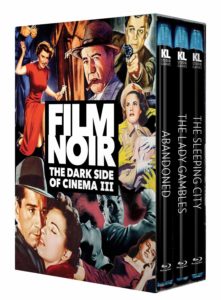
Kino Lorber Studio Classics is back with a third entry into its ongoing box-set series, “Film Noir: The Dark Side of Cinema”. This time we have two entries from 1949, Abandoned and The Lady Gambles, and one from 1950, The Sleeping City. How do these three films unearthed from the Universal International back-catalog fare? Let’s take quick individual looks at each of the new Blu-rays:
Abandoned
DIRECTED BY JOE NEWMAN/1949
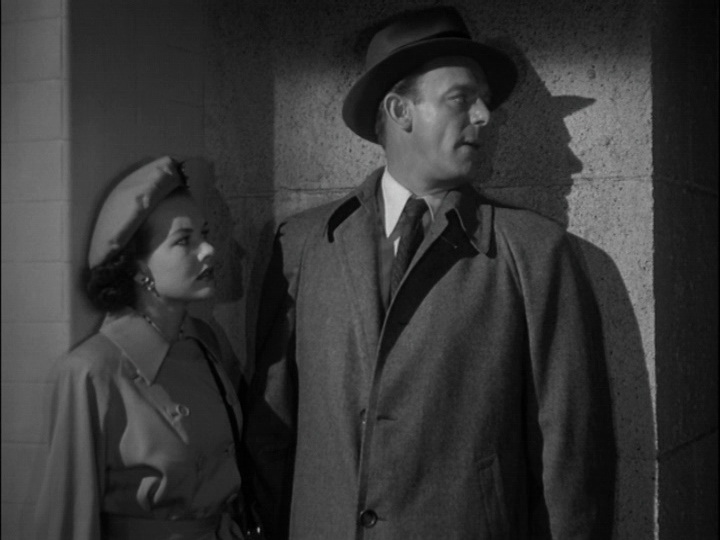
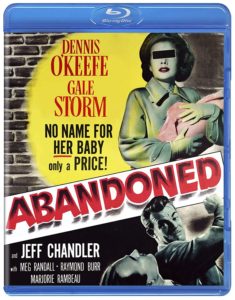
Joseph M. Newman’s (credited here as Joe Newman) Abandoned is one of those movies that, in retrospect, truly serves as a window into postwar America. The current-day takeaways are almost in spite of itself, as the film’s eventual central plot of kidnapping and a black-market baby ring is peppered all around with thankfully outdated mid-century notions of pregnancy and single motherhood.
Of course, this being a film from 1949, there’s so much that cannot be spoken about overtly onscreen. (What with Hollywood production code standards and heights social taboos of the time). Abandoned, though, is not one of those vintage films that we now look upon as some sort of enlightened smuggler of critical social commentary. It’s more of a document of things as they were, albeit by way of a keyed-up crime procedural.
Evocatively shot in deep black and white by the legendary cinematographer William A. Daniels, Abandoned stars a tall n’ cool Dennis O’Keefe as street journalist Mark Sitko. Sitko is intended to be ever the charmer from minute one, hitting on the attractive Paula Considine (Gale Storm) in the police station as she files a missing person report on her sister. The fact that Paula is visibly distraught does nothing to slow his roll. Even as she rebuffs him, he gloms onto her, deciding that her case might be his next big story. Sitko being a creep isn’t blatantly apparent as the film’s intention, but boy, is he. Naturally, she eventually lets her guard down and takes to him. But not before she’s subtly drawn him into her plight. To paraphrase Bob Seger, she used him, he used her, but neither one cared. Workin’ on their night moves…
As far as ever-amorphous Film Noir goes, this is a most intriguing entry. It forgoes typical murder and femme fatale plots for a slowly unfolding crime story that starts with Paula’s missing sister before veering into a murder case before veering into kidnapping and her sister’s missing baby. As film historian Samm Deighan notes during her fantastic, spot-on audio commentary, we tend not to deal with babies in Film Noir. This renders Abandoned as something of a “women’s picture”/crime movie hybrid adorned with Noir tropes such as the aforementioned black and white cinematography, the opening and closing narration, the rather merciless urban world it depicts, and occasional crackling dialogue like, “You going legit is like a vulture turning vegetarian!”.
The villainous presence of Raymond Burr as a checked-out heavy and sweet old Marjorie Rambeau as his insidious boss (one of the downright nastiest villains in all of Film Noir as she used a Bible to lure her prey) sweetens this pot considerably, even as the storytelling leans too heavily into somewhat run-of-the-mill procedural/chase mode. Jeff Chandler, prominently credited for his supporting role as the local police chief, is always a welcome presence, in any case.
Noir fans will be very happy with this Blu-ray presentation of Abandoned as well as Samm Deighan’s contextualization of all the films themes, issues, cast and crew.
The Lady Gambles
DIRECTED BY MICHAEL GORDON/1949
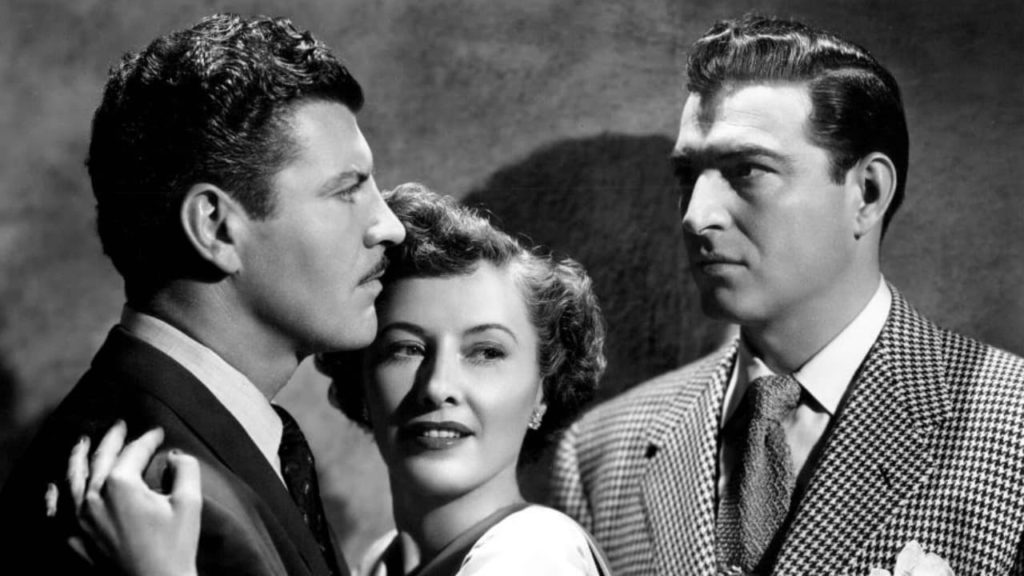
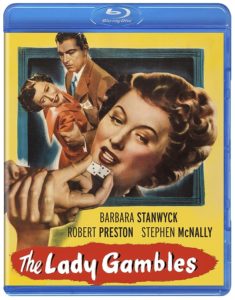
“Film Noir: The Dark Side of Cinema III” veers considerably further into the “women’s picture” genre with 1949’s The Lady Gambles, starring Barbara Stanwyck. The Lady Gambles is the rare feature-length cautionary tale about the addictive and destructive power of gambling.
Even in 1949, addiction stories were not exactly novel on the big screen. Gambling, though, particularly with the protagonist being not just the addict in question, but a woman, lends something of a unique quality here. Stanwyck, though inching into decline in terms of her leading-lady popularity, nevertheless gives this her professional all. Even as this torn-apart out of control and straying wife, Stanwyck commands every moment she’s a part of- and even those she’s not. In characteristically uncompromising fashion, she’s not afraid to appear in The Lady Gambles without makeup and with garish hair in her later moments of downward spiral.
Even in this historical moment of widespread social repression, which very much spread to the big screen, Stanwyck’s inherent sexiness and self-assurance shines through, perhaps informing the fact that her husband (a most principled Robert Preston) remains deeply enamored with her even as her character loses all their money, lies compulsively, and eventually falls into the arms of another man (Stephen McNally). (“I’m just a hick from Chicago with a shiny new toy!”, she flirtatiously tells him as she downplays her dire Vegas casino fixation). But then, perhaps it’s prudent to note that the entire story is told in flashback from said husband’s point of view, including many moments he wasn’t present for. As film historian Kat Ellinger postulates on her audio commentary track, this device is a rather transparent way of this film wrestling narrative control away from the female lead, even in as its ostensibly a “women’s picture”.
Directed with occasional flourish by Michael Gordon (Woman in Hiding), The Lady Gambles is an interesting and mostly engaging time capsule. Most interest in this respect is its location photography of old-time Las Vegas. It was still an all-night den of quick marriage, quick divorce, and the allure of a quick buck, but the factual narrative of mob rule was yet to be a commonly known fact. Also of interest is the location footage of the Hoover Dam. Albert Brooks and Julie Haggerty also went to all these places in 1985’s great comedy Lost in America, but in that film the wife’s gambling problem is a plot twist, not the point. “[Vegas] is a terrible town for husbands.” Apparently, yes it is. It is a women’s picture, after all. Albeit, also a Noir with a long, slow descent.
The Sleeping City
DIRECTED BY GEORGE SHERMAN/1950
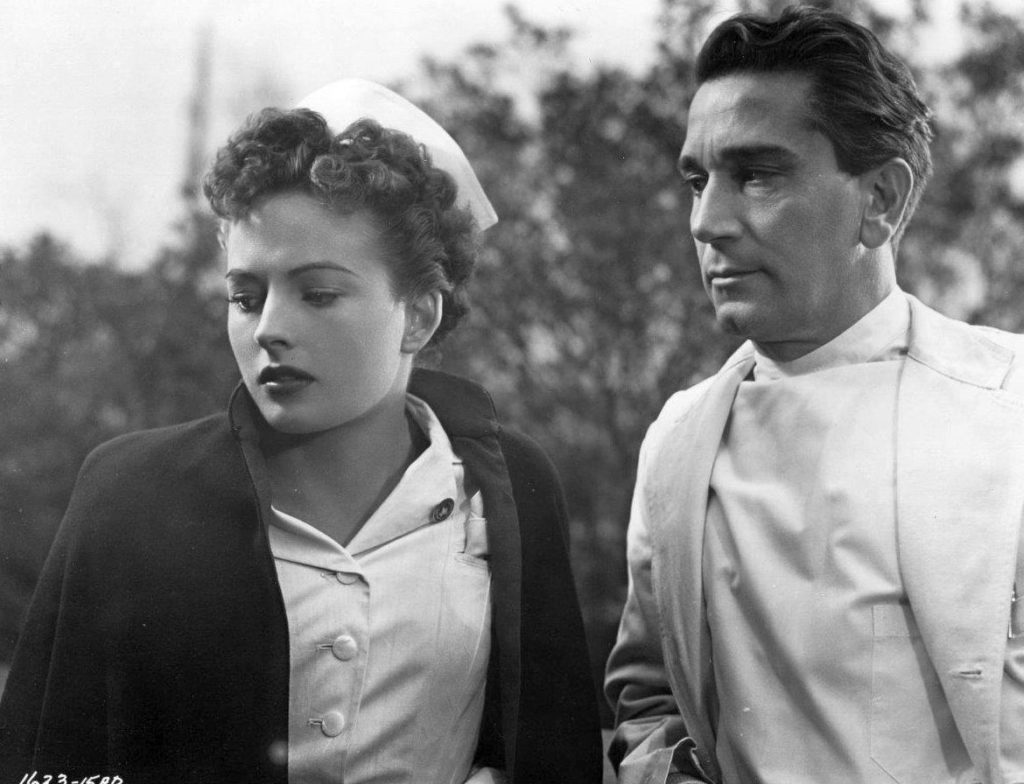
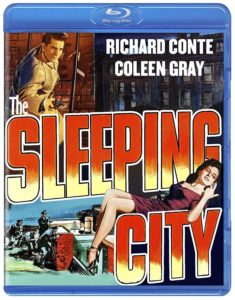
The very first thing that happens in director George Sherman’s 1950 undercover cop yarn The Sleeping City is lead actor Richard Conte addressing the camera out of character to let viewers know that the actual hospital that they filmed much of the movie in is really a top-notch place. A surefire indicator that the remaining eighty-five minutes (give or take) will absolutely drag the institution through some choice mud. And, this being a crime Noir, it does not disappoint on that front. To paraphrase Bill Murray in Tootsie, this is one messed-up hospital.
Upright but with a fragility about him, Richard Conte plays undercover detective Fred Rowan, assuming the concocted identity of Fred Gilbert. He’s posing as a doctoral intern, thereby lessening the chance of his being called upon to suddenly perform any life or death surgery. (The advice he’s given: “If you are called upon to perform any medical tasks, attempt to delegate those tasks to knowledgeable professionals.” Gee, thanks). Fortunately for him and more fortunate for any patients, that scene never comes along. But he does find himself embroiled in an internal crime ring.
It all starts when a very concerned doctor from said hospital that we never get the chance to know has his stroll on the streets of New York City (the real deal, alright) cut short by being suddenly shot in the head. The sudden murder is boldly and shockingly depicted in close-up, jarring even by today’s standards. Detective Rowan is selected and dispatched to go deep and infiltrate the ranks of the medical professionals and hospital staff in a focused effort to find the killer. Along the way, he falls in love with a beautiful nurse played by Coleen Gray. As their relationship deepens, so does the criminal plot that surrounds the execution. Things get ugly as the path to justice becomes apparent.
The Sleeping City scores points for its unsexy authentic city hospital interiors and legitimately gritty street scenes. (Though occasionally tinny audio, due to the hospital’s metal interiors and wireless microphones not yet having been invented, is also part of the deal when it comes to such authenticity). Conte, though, is not exactly compelling leading man material. He does a respectable if also unmemorable job. The movie itself generally follows suit: good enough, not great; quickly forgettable. But considering the tense possibilities in the undercover situation and the criminal ring that is uncovered, this film could’ve been so much more. Film historian Imogen Sara Smith contributes a strangely edited-together and obviously scripted audio commentary as the Blu-ray’s only noteworthy bonus feature besides trailers for the film and one other.
*****
Kino Lorber Studio Classics “Film Noir: The Dark Side of Cinema III” is a marked improvement in terms of its films living up to its title and well-designed retro-cool box art. Whereas last month’s Volume II struggled to deliver on the “Film Noir” front, this one comes up Noir-positive all three times. (Though The Lady Gambles is admittedly debatable). Picture and sound quality are more than up to snuff, and this time, all three movies come with newly recorded film historian commentary tracks, whereas Volume II had only one. Interestingly, all three commentators are solo female-led tracks, thus impacting the typically male-driven sphere of Noir analysis. More power to you, ladies, and good job.
Additionally, the choice of films is moderately better on the whole in comparison to the previous volume. Even when these films don’t hit on all cylinders, they warrant their availability on Blu-ray in their own individual ways. Abandoned has its deplorable baby-napping villains; The Lady Gambles has Barbara Stanwyck who never disappoints, as well as some quality glimpses of vintage Las Vegas; The Sleeping City has its dungeon-like hospital setting which amplifies its storied situation. None will likely register as anyone’s favorite movies, or even favorite Films Noir. But for the money, this is a set worth having. “Film Noir: The Dark Side of Cinema IV” is on the way next month; let’s hope that it can live up to or top this one.
The images and promotional material used in the review are present only as a reference to the films and are not meant to reflect the actual image quality or content of the Blu-rays.

